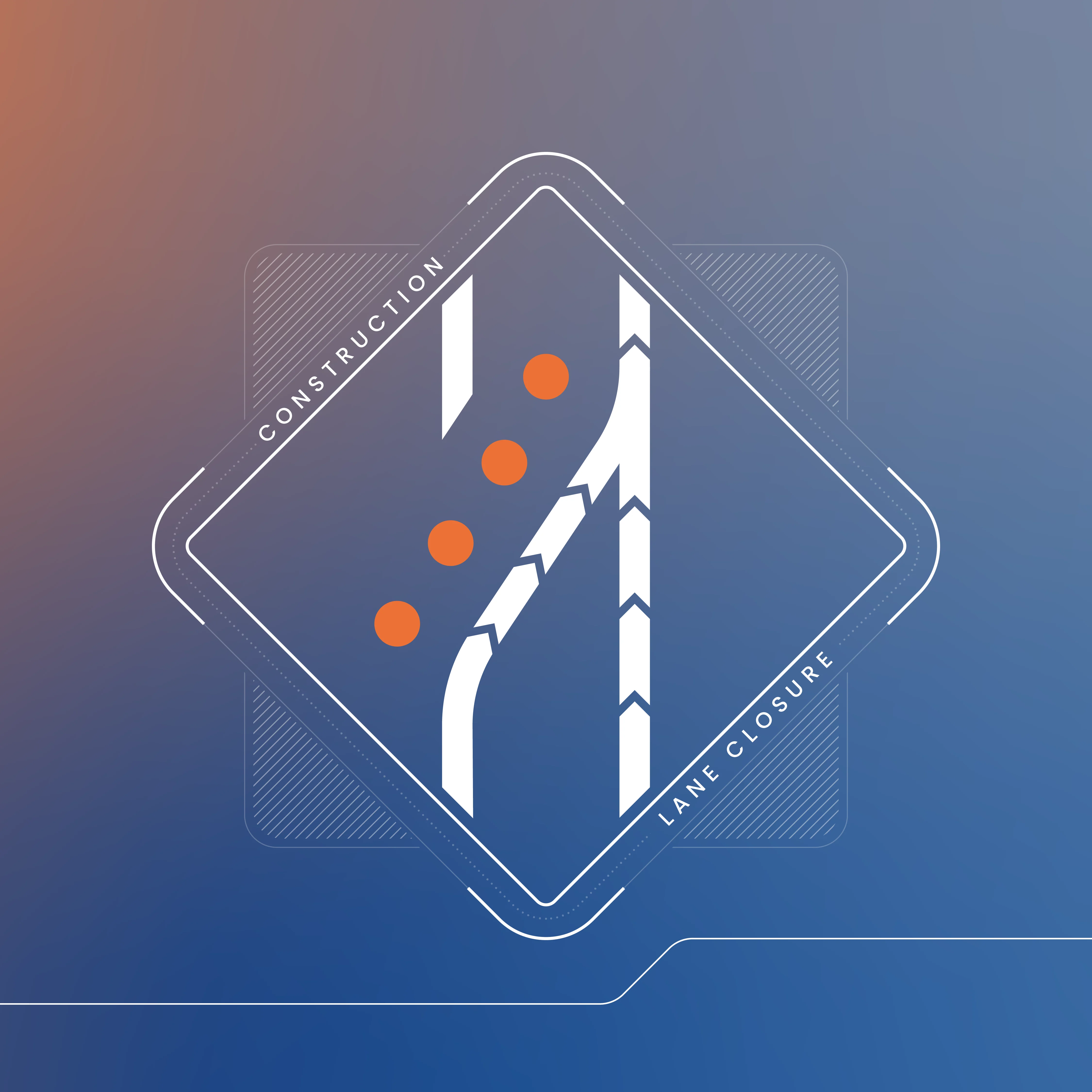Capability spotlight: Tackling construction
Aurora Driver | April 15, 2022 | 3 min. read
By Yanbing Li

While driving any vehicle in the real world, you can expect to encounter anything from open roads and blue skies to heavy rain and stop-and-go traffic. And if you’ve ever driven in Texas, you know that its roadways are infamous for year-round construction. Construction is a common feature on many of our nation’s major freight corridors, so to operate on the U.S. highway system and deliver goods for our commercial partners safely and on time, the Aurora Driver must be able to navigate construction zones autonomously. But construction zones are tricky—they can pop up and disappear without notice, display confusing signage, and consist of hazardous materials, moving vehicles, and pedestrians.
Aurora Driver-powered vehicles have driven through over 3,500 miles of construction on Texas roads in the last nine months. On our Dallas to El Paso route alone, our vehicles encounter about 40 construction sites a week. Our data science team has analyzed hundreds of terabytes of data on all of the trips we’ve driven on Texas roadways to determine which types of construction-related challenges tend to occur most often on our commercial routes. By focusing our time and resources on overcoming these challenges first, we prioritize developing capabilities for the Aurora Driver that have the highest impact. Acquiring these critical capabilities allows our trucks to operate in autonomy for longer stretches of time and gets us closer to delivering on the promise of autonomous long-haul trucking.
Last week I rode in an Aurora Driver-powered Peterbilt truck for 11 hours, pulling a commercial load for our partner, Werner, between El Paso and Dallas. I got to witness first-hand the high frequency and complexity of construction zones on the route, and how much progress the Aurora Driver has made in navigating these construction zones autonomously.

Testing new capabilities safely and at scale
Lane closures are one of the most common construction situations our trucks encounter. When the right-most lane of the road is closed, our trucks have to move over to the left lane and carefully pass by the work zone, where workers might be operating heavy machinery just feet away from traffic.
To safely maneuver around a construction zone that has closed off the right lane of the road, the Aurora Driver must:
1. Detect the construction signs.
2. Recognize that those signs are signaling an upcoming work zone and lane ending.

3. Decelerate to comply with the temporary posted speed limit.
4. Decide to change lanes.
5. Find a spot between cars in the next lane.
6. Execute a lane change.

7. Pass the work zone while remaining cautious of moving pedestrians and construction equipment, debris in the roadway, and cones or other obstructions encroaching into the open lane.

8. After passing the work zone, decide to change lanes back to the right.
9. Accelerate to the appropriate speed limit.
Each of these steps requires a host of complex computations.
To perceive and react to signs and construction elements as far in advance as possible, the Aurora Driver is equipped with high-performing cameras, radars, and lidars. These sensor kits allow the Aurora Driver to “see” signs, road markings, and other obstructions early while traveling at high speeds, leaving enough time to change lanes or maneuver around obstacles.

Changing lanes with a big truck is also much more difficult than it is with a car. The Class 8 semi-trucks carrying loads for our partners are over 50 feet long, and to change lanes, the Aurora Driver must wait for a large gap in traffic. The Aurora Driver must forecast the movements of the other vehicles on the road to find the right opening and determine the right timing to attempt the lane change.
As it drives, the Aurora Driver’s motion planner is making, evaluating, and updating its decisions 10x a second on average based on the sensor data it gathers. This allows it to not only detect construction elements like cones and barrels, but also reason about them and understand that they should be treated as equivalent to a solid barrier. This is reflected in the Aurora Driver’s perception system as a “blockage region,” which, in our visualization tool, looks like a yellow wall.

Sometimes the cones or barrels that mark the bounds of a construction zone take up space in the adjacent lane. So to avoid hitting these obstacles, the Aurora Driver has to “nudge” around them by driving outside of the lane.

To quickly and safely teach the Aurora Driver to handle these situations, we reconstruct the on-road examples we’ve captured in our Simulation Engine. We can then modify the diversity and complexity of our synthetic scenarios to create endless permutations of virtual tests, allowing us to test the Aurora Driver’s ability to “nudge” around all kinds of obstacles at scale. We can even easily swap out which vehicle platform the Aurora Driver uses so that our trucks and cars learn new capabilities in parallel.

Once the Aurora Driver can reliably execute a new maneuver in simulation, we begin validating the capability in the real world, first on test tracks, and then on public roadways.

Today in Texas, Aurora Driver-powered trucks safely detect and drive past construction zones and nudge around barrels and other obstacles on a regular basis while hauling freight for our partners.
In future blog posts, we’ll explore other critical capabilities the Aurora Driver has acquired.
Senior Vice President, Software Engineering